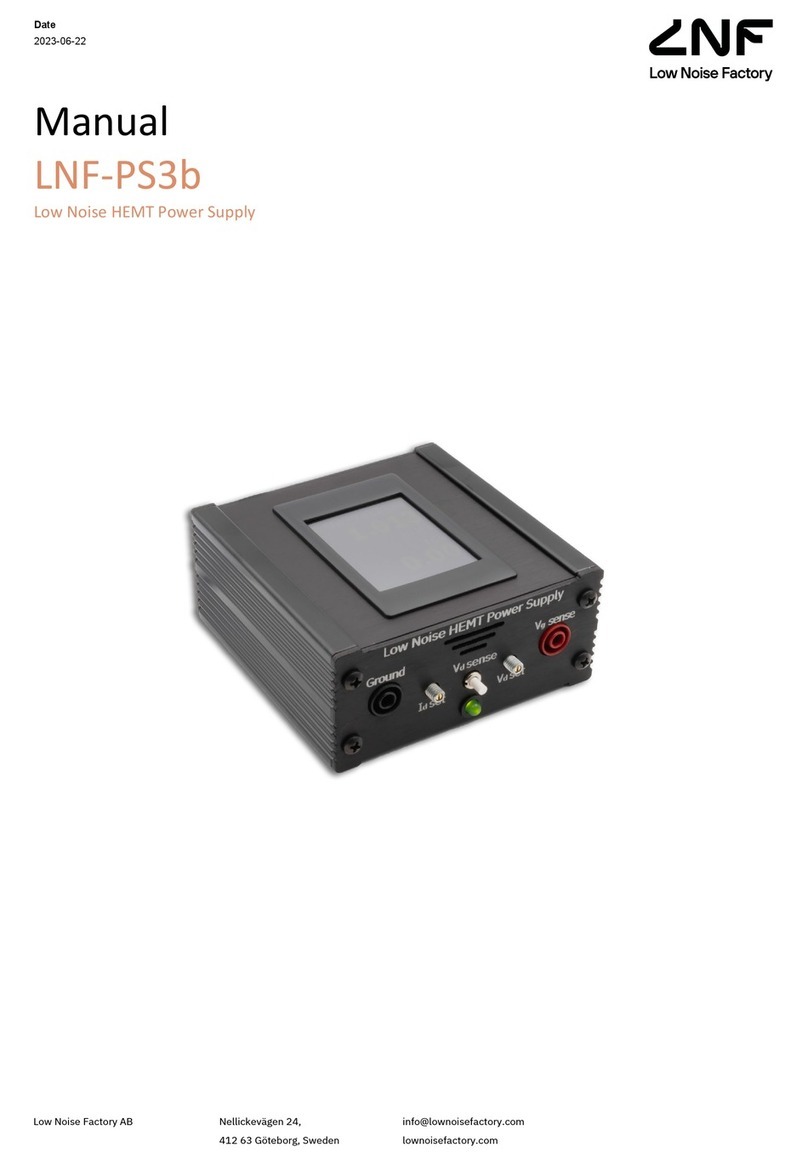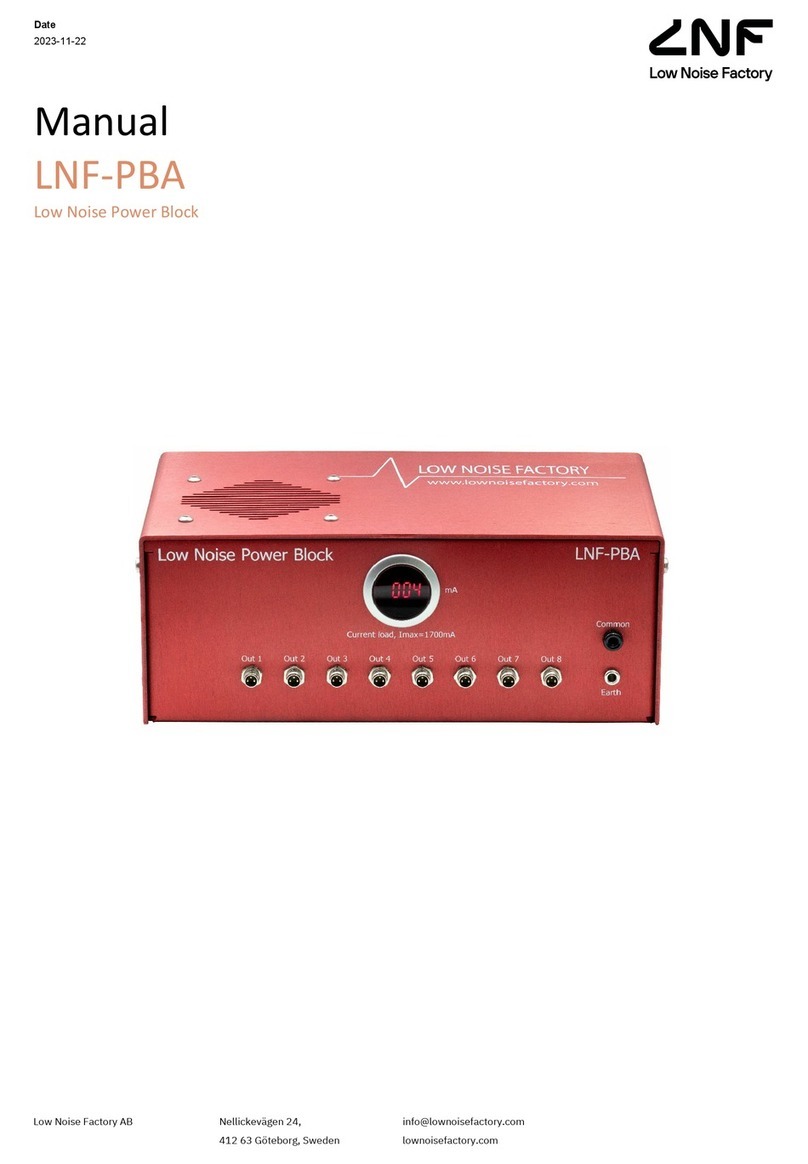P a g e | 7
6. Using the instrument
The LNF-PBA uses a transformer, rectifiers and regulators to convert mains AC to ±12V DC
needed for LNF’s HEMT power supplies. There are 8 identical output connectors on the front
panel providing the ±12V to the HEMT power supplies. All 8 outputs are connected in
parallel and are not isolated from each other. There’s a panel instrument on the front panel
indicating how much current is drawn from the +12V rail. Since all LNF’s current and future
HEMT power supplies mainly draw current from the positive rail, this current will always be
the limiting factor to how many power supplies the LNF-PBA can drive. The maximum
current the instrument can deliver is 1700 mA. The instrument has automatic current
limit/foldback. When the current exceeds 1700 mA, the voltage will drop below 12V. When
this happens all HEMT power supplies connected to the instrument will be affected and will
not operate properly. The table below lists typical current draw from LNF’s HEMT power
supplies. It is important to place the instrument so that the panel meter can easily be read
and the mains switch can easily be reached. Only use the supplied cable to connect the
instrument to LNF’s power supply or the accessory cable LNF-PBA-C.
There’s access to circuit common and earth on the instrument’s front panel. There’s also a
jumper plug included with the instrument which can be used to connect circuit common to
earth. With this feature, the instrument can be configured to be floating or non-floating. It is
highly recommended to always use it non-floating, i.e. with the jumper plug installed, when
connecting or disconnecting LNAs to your system. Once the system is in operation, the
jumper plug can be removed if a floating system is desired. This could be the case in complex




























